DC1 fails.
You need to meet the technical requirements for the schema master.
Yourunntdsutil.exe.
Which five commands should you run in sequence? To answer, move the appropriate commands from the list of commands to the answer area and arrange them in the correct order?

You need to implement the planned changes for the Azure DNS Private Resolver.
Which private DNS zones can you use for name resolution?
You need to implement the planned changes for Microsoft Entra users to sign in to Server1.
Which PowerShell cmdlet should you run?
You need to meet technical requirements for HyperV1.
Which command should you run? To answer, select the appropriate options in the answer area.
NOTE: Each correct selection is worth one point.

You need to ensure that VM3 meets the technical requirements.
What should you install first?
You need to ensure that data availability on SSPace1 meets the technical requirements.
What is the maximum number of physical disks that can fail on each disk? To answer, select the appropriate options in the answer area.
NOTE: Each correct selection is worth one point.
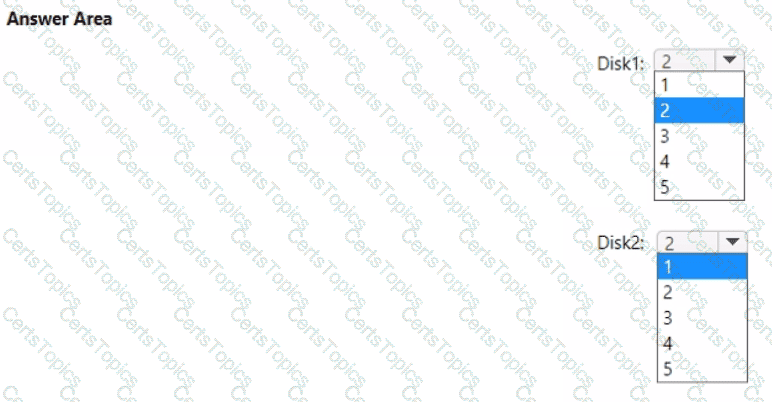
You need to ensure that Automanage meets the technical requirements.
On which Azure virtual machines should you enable Automanage?
You need to implement the planned change for Data1.
Which actions should you perform in sequence? To answer, drag the appropriate actions to the correct order. Each action may be used once, more than once, or not at all. You may need to drag the split bar between panes or scroll to view content.
NOTE: Each correct selection is worth one point.

Which two languages can you use for Task1? Each correct answer presents a complete solution.
NOTE: Each correct selection is worth one point.
You need to ensure that access to storage1 for the Marketing OU users meets the technical requirements.
What should you implement?
You need to meet the security requirements for passwords.
Where should you configure the components for Azure AD Password Protection? lo answer, drag the appropriate components to the correct locations. Each component may be used once, more than once, or not at all. You may need to drag the split bar between panes or scroll to view content.
NOTE Each correct selection is worth one point.

You need to configure network communication between the Seattle and New York offices. The solution must meet the networking requirements.
What should you configure? To answer, select the appropriate options in the answer area.
NOTE: Each correct selection is worth one point.

Which three actions should you perform in sequence to meet the security requirements for Webapp1? To answer, move the appropriate actions from the list of actions to the answer area and arrange them in the correct order.
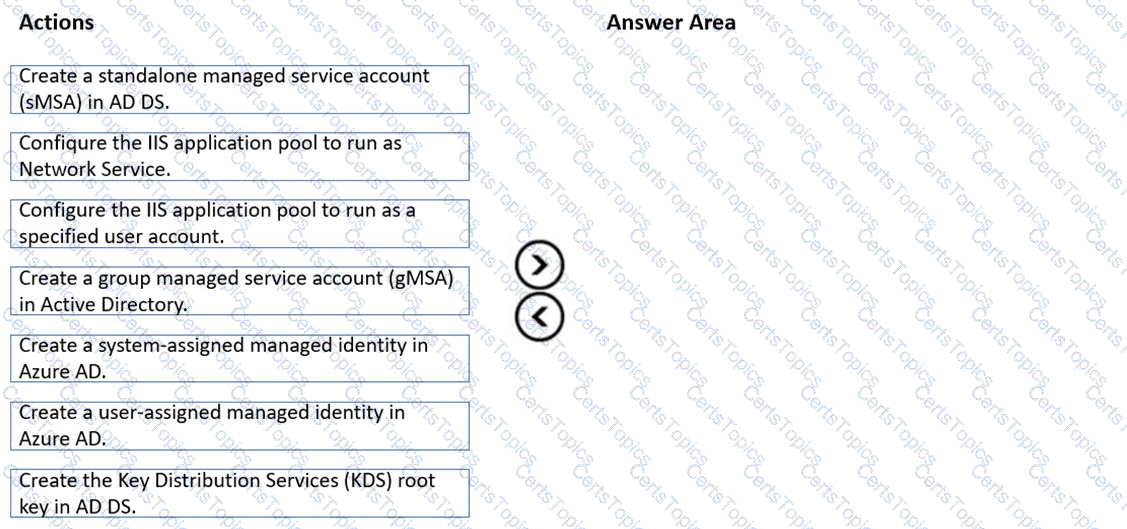
What should you implement for the deployment of DC3?
You are planning the implementation Azure Arc to support the planned changes. You need to configure the environment to support configuration management policies. What should you do?
Your network contains an Active Directory domain, a web app named App1, and a perimeter network. The perimeter network contains a server named Server1 that runs Windows Server.
You plan to provide external access to App1.
You need to implement the Web Application Proxy role service on Server1.
Which role should you add to Server1, and which role should you add to the network? To answer, drag the appropriate roles to the correct targets. Each role may be used once, more than once, or not at all. You may need to drag the split bar between panes or scroll to view content.

Your network contains an Active Directory Domain Services (AD DS) domain named adatum.com. The domain contains a file server named Server1 and three users named User1, User2, and User3.
Server1 contains a shared folder named Share1 that has the following configurations:
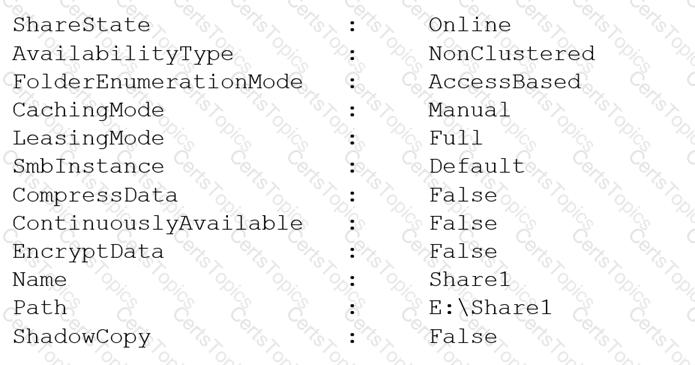
The share permissions for Share1 are configured as shown in the Share Permissions exhibit.

Share1 contains a file named File1.bxt. The share settings for File1.txt are configured as shown in the File Permissions exhibit.
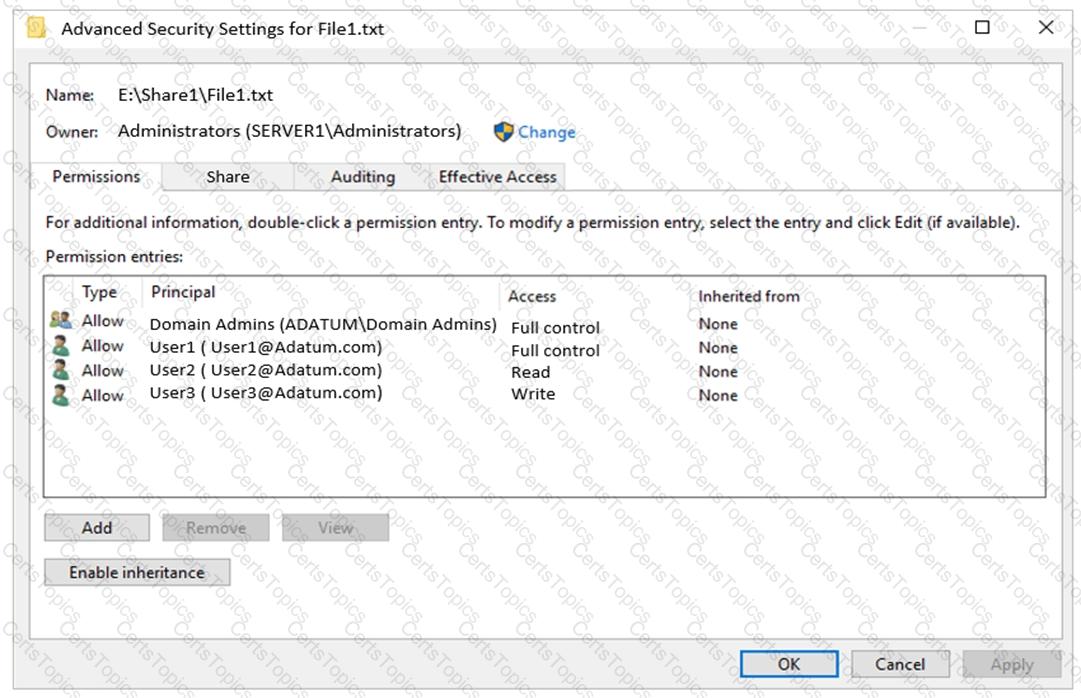
For each of the following statements, select Yes if the statement is true. Otherwise, select No.
NOTE: Each correct selection is worth one point.

You have an Azure virtual machine named Served that runs a network management application. Server1 has the following network configurations:
• Network interface: Nic1
• IP address. 10.1.1.1/24
• Connected to: VnetVSubnet1
You need to connect Server1 to an additional subnet named Vnet1/Subnet2.
What should you do?
You have an Azure virtual machine named VM1 that runs Windows Server.
You need to ensure that administrators request access to VM1 before establishing a Remote Desktop connection.
What should you configure?
You need to sync files from an on premises server named Server1 to Azure by using Azure File Sync.
You have a cloud tiering policy that is configured for 30 percent free space and 70 days.
Volume E on Server1 is 500 GB.
A year ago, you configured E:\Data on Server1 to sync by using Azure File Sync. The files that are visible in E:\Data are shown in the following table.

Volume E does NOT contain any other files.
Where are File1 and File3 located? To answer, select the appropriate options in the answer area.
NOTE: Each correct selection is worth one point.
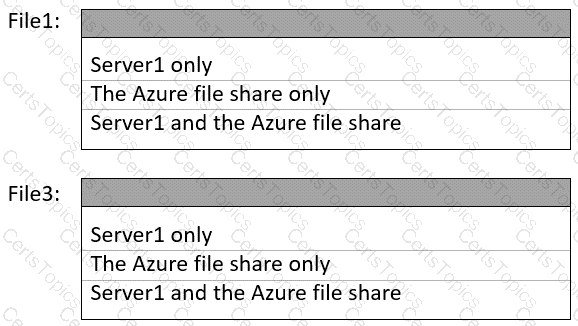
You have an Active Directory Domain Services (AD DS) domain that contains the domain controllers shown in the following table.
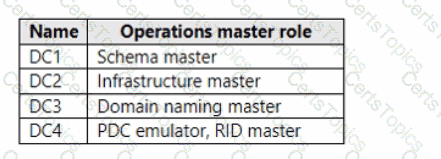
The domain contains an app named App1 that uses a custom application partition to store configuration data.
You decommission App1.
When you attempt to remove the custom application partition, the process fails.
Which domain controller is unavailable?
You plan w deploy an Azure virtual machine that win run Windows Server. The virtual machine will host an Active Directory Domain Services (AD DS) domain controller and a drive named f: on a new virtual disk.
You need to configure storage foe the virtual machine. The solution must meet the following requirements
• Maximize resiliency for AD DS.
• Prevent accidental data loss.
How should you configure the storage? To answer, select the appropriate options in the answer area.
NOTE: Each correct selection is worth one point.

Your network contains an Azure AD Domain Services domain named contoso.com.
You need to configure a password policy for the local user accounts on the Azure virtual machines joined to contoso.com.
What should you do? To answer, select the appropriate options in the answer area.
NOTE: Each correct selection is worth one point.

You have a server named Server1 that runs Windows Server. Server1 has a single network interface and the Hyper-V virtual switches shown in the following exhibit.
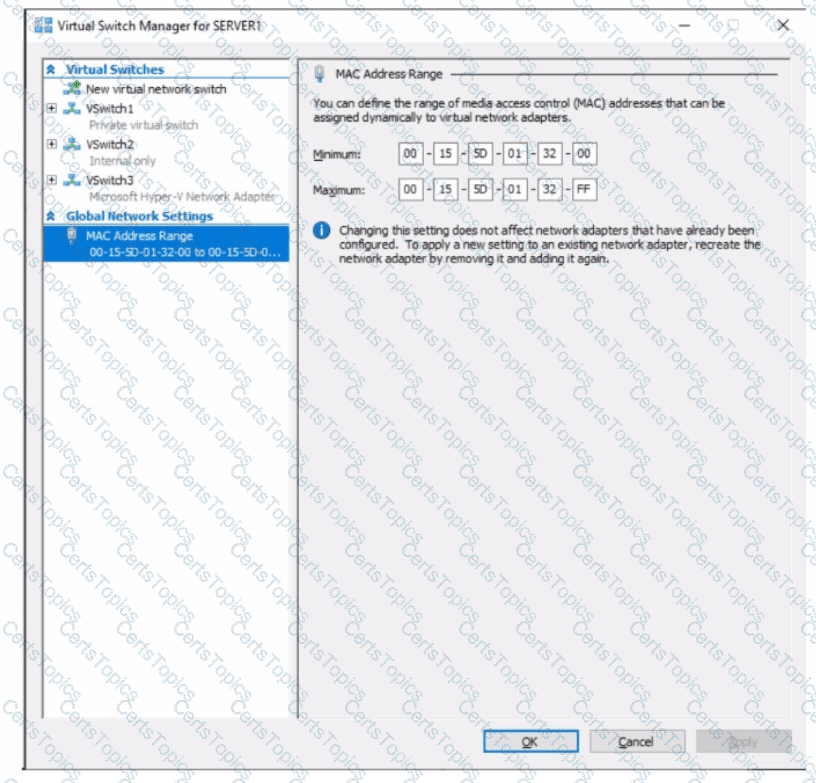
Use the drop-down menus to select the answer choice that completes each statement based on the information presented in the graphic.
NOTE: Each correct selection is worth one point.

You have an Azure Active Directory Domain Services (Azure AD DS) domain.
You create a new user named Admin1.
You need Admin1 to deploy custom Group Policy settings to all the computers in the domain. The solution must use the principle of least privilege.
What should you include in the solution? To answer, select the appropriate options in the answer area.
NOTE: Each correct selection is worth one point

Your network contains an Active Domain Services (AD DS) forest. The forest contains three domains. Each domain contains 10 domain controllers.
You plan to store a DNS zone in a custom active Directory partition.
You need to create the Active Directory partition for the zone. The partition replicate to only four of the domain controllers.
What should you use?
You have an on-premises server that runs Windows Server and contains the folders shown in the following table.
You have an Azure subscription.
You plan to implement Azure File Sync
Which folders can be added as Azure File Sync server endpoints?
You have an Azure virtual machine named Server1 that runs a network management application. Server1 has the following network configuration.
* Network interface.Nic1
* IP address 10.1.1.1/24
* Connected to: Vnet1/Subnet1
You need connect Server1 to an additional subnet named Vnet1/Subnet2.
What should you do?
Your company has a main office and a branch office. The two offices are connected by using a WAN link. Each office contains a firewall that filters WAN traffic.
The network in the branch office contains 10 servers that run Windows Server. All servers are administered from the main office only.
You plan to manage the servers in the branch office by using a Windows Admin Center gateway.
On a server in the branch office, you install the Windows Admin Center gateway by using the defaults settings.
You need to configure the firewall in the branch office to allow the required inbound connection to the Windows Admin Center gateway.
Which inbound TCP port should you allow?
Your network contains a Active Directory Domain Service (AD DS) forest named contoso.com. The forest root domain contains a server named server1. contoso.com.
A two-way forest trust exists between the contoso.com forest and an AD DS forest named fabrikam.com. The fabrikam.com forest contains 10 child domains.
You need to ensure that only the members of a group named fabrikam\Group1 can authenticate to server1.contoso.com.
What should you do first?
Which groups can you add lo Group3 and Groups? To answer, select the appropriate options in the answer area. NOTE Each correct selection is worth one point.

You need to meet the technical requirements for User1. The solution must use the principle of least privilege.
What should you do?
You need to meet the technical requirements for Server4.
Which cmdlets should you run on Server1 and Server4? To answer, select the appropriate options in the answer area.
NOTE: Each correct selection is worth one point.
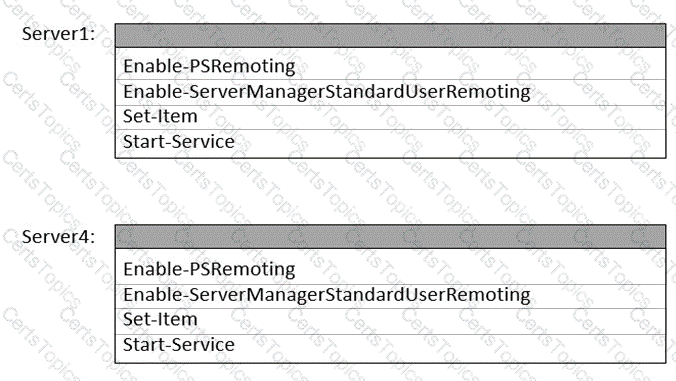
For each of the following statements, select Yes if the statement is true. Otherwise, select No.
NOTE: Each correct selection is worth one point.

You need to meet the technical requirements for Server1. Which users can currently perform the required tasks?
You need to meet the technical requirements for VM2.
What should you do?
You need to meet the technical requirements for VM1.
Which cmdlet should you run first? To answer, select the appropriate options in the answer area.
NOTE: Each correct selection is worth one point.

You need to meet the technical requirements for the site links. Which users can perform the required tasks?
Which groups can you add to Group3 and Group5? To answer, select the appropriate options in the answer area.
NOTE: Each correct selection is worth one point.

You need to meet the technical requirements for VM3
On which volumes can you enable Data Deduplication?
Task 3
You need to run a container that uses the mcr.microsoft.com/windows/servercore/iis image on SRV1. Pott 60 on the container must be published to port 5001 on SRV1 and the container must run in the background.
Task 10
You need to ensure that SRV1 only leases IP addresses from the range of 192.168.1.190 to 192.168.1.200 to computers that have a MAC address that starts with aabb.
Task 9
You need to replicate a read-only copy of a DNS zone named contosoxom to SRV2.